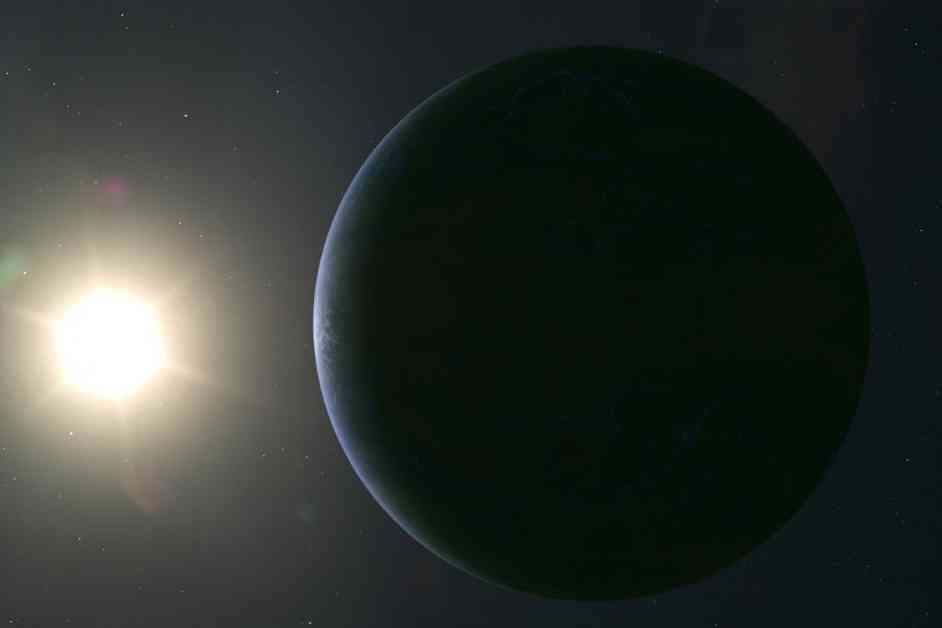A Mysterious New World: The Hunt for Earth 2.0 Expands
In the vast expanse of the cosmos, amidst the backdrop of over 5,000 exoplanets documented by astronomers, a recent discovery has captured the attention of scientists and stargazers alike. Enter HD 20794 d, a potential habitable planet orbiting a sunlike star within tantalizing proximity to Earth. Despite its intriguing status, this enigmatic world remains shrouded in mystery, its true nature and potential for habitability sparking both curiosity and debate among researchers.
The Quest for Earth 2.0: Unveiling the Mysteries of HD 20794 d
Named after its host star HD 20794, this planetary sibling of HD 20794 b and HD 20794 c has emerged as a celestial enigma, boasting a mass equivalent to 6.5 Earths. Is it a rocky super-Earth, a gaseous mini-Neptune, or a water-drenched ocean world? The answer lies within the planet’s eccentric 647-day orbit, swinging from icy distances to searing proximity with its star—a cosmic dance that traverses the precarious edge of the star’s habitable zone. Could liquid water exist on this world, nurturing the seeds of life, or do extreme fluctuations in temperature render it inhospitable?
The Stellar Spotlight: HD 20794 Shines Bright in the Night Sky
Nestled in the constellation Eridanus, HD 20794 gleams conspicuously in Earth’s firmament, a beacon for planet-hunters seeking new worlds. Multiple teams have meticulously tracked the star’s movements, striving to detect subtle wobbles induced by unseen planetary companions. The quest for HD 20794 d has been a saga of false leads and dashed hopes, requiring decades of patient observation and data analysis. Only recently, a breakthrough in data reduction techniques unveiled the presence of this elusive planet, confirming its existence and tantalizing astronomers with the promise of further revelations.
Deciphering the Enigmatic World: HD 20794 d’s Composition and Habitability
As researchers grapple with the puzzle of HD 20794 d, fundamental questions about its composition and habitability loom large. Could this planet harbor rocky surfaces conducive to life’s chemistry, or is it veiled beneath layers of water or gas? The enigmatic nature of HD 20794 d’s mass raises further uncertainties, hinting at a realm where Earth-like conditions may or may not prevail. Despite the planet’s eccentric orbit and extreme climate oscillations, astronomers remain hopeful that deep oceans and pressure differentials could create hospitable niches for life to emerge, echoing Earth’s primordial origins.
A Glimpse into the Future: HD 20794 d’s Role in the Search for Habitable Worlds
As the hunt for Earth 2.0 continues, HD 20794 d emerges as a prime candidate for future exploration. Proposed missions such as NASA’s Habitable Worlds Observatory (HWO) and ESA’s Large Interferometer For Exoplanets (LIFE) could shed light on this mysterious world, capturing images, mapping surfaces, and analyzing atmospheres for signs of life. With HD 20794 d poised on the cusp of scientific scrutiny, astronomers anticipate a new chapter in the quest for habitable exoplanets, a quest that not only illuminates the mysteries of the cosmos but also deepens our understanding of our own planetary origins.
In essence, the search for Earth 2.0 transcends mere astronomical exploration; it embodies a profound journey of self-discovery, inviting us to ponder our place in the universe and appreciate the intricate tapestry of celestial wonders that surround us. As HD 20794 d beckons us closer, its enigmatic allure serves as a reminder of the boundless mysteries awaiting discovery in the vast expanse of the cosmos.










